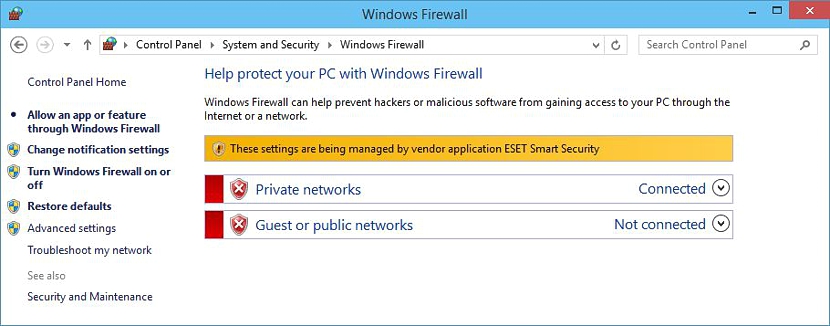
What can happen if we do not have a Firewall as a control system in Windows? Well, simply that our computer with said operating system would be unprotected at all times. Even when we do not have a professional or complete antivirus system, Microsoft has placed a native function so that users of its operating systems can be slightly protected.
Of course, the best thing to do is to try to have an antivirus system installed on the computer, which must be "complete" so that it can offer a large number of security features. In this article we will mention a few tricks that you can adopt to be able to configure or restore the Firewall rules if at a certain moment you think that an application has modified them for your benefit.
Windows Firewall or third-party applications
As we suggested above, it is better to try to use a Firewall system that is included in the antivirus system package, because with this, it will be the one that reaches manage each of the rules in the operating system. If at a certain point the antivirus has detected some type of anomaly on the part of an application that we are installing (or that we have already installed previously), it will immediately create a rule to prevent said tool from communicating with its developer's servers. This type of case generally occurs in malware, Trojans, worms, Spyware and many other threats.
At the top we have placed a small capture, which is indicating that the antivirus system is managing the respective rules and that therefore, the user will not have access to them. Eset is one of the most restrictive antivirus that can exist today, something that may sound annoying for its users because they will not have the possibility to modify some of its functions. Now, if you do not have an antivirus installed in Windows and you think that someone (an application or tool) has modified the communication rules on your computer, then we will mention what you must do to restore them.
- First you must go to the Windows Control Panel.
- From the window that appears you will have to choose the one related to the «Security«.
- Later choose the option of «Firewall«.
- On the left side (on the side band) choose the option that says «Restore defaults«.
Theoretically that's the only thing we should do, at which point Windows Firewall system will restore automatically to the default rules for the operating system. However, there are certain cases in which these rules are not recovered due to the fact that some tool has already affected them, and therefore another measure a little more specialized (but drastic) must be adopted that will offer better results.
- Click on the Windows Start Button.
- In the search type «cmd»And from the results, select it with the right mouse button to run it with administrator rights.
- Once the command terminal window is open, type the following and then press the «enter» key:
netsh advfirewall reset
With this alternative that we have mentioned and relying on the Windows command terminal, the default Windows Firewall rules have been recovered immediately. We want to mention at this moment a little trick that is worth taking into account from now on, because it will help us to execute the CMD with administrator permissions, something that is generally used when following certain tricks, tips and usage guides in Windows:
- Click on the "Windows Start Menu."
- In the search field write «cmd«
- Immediately you have use the keyboard shortcut: CTRL+Shift+Enter
By using this keyboard shortcut, the "cmd" will run with administrator permissions automatically, not having to use the right mouse button as we suggested above.



